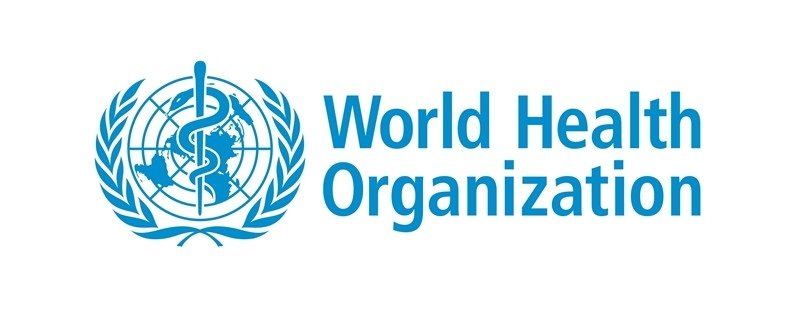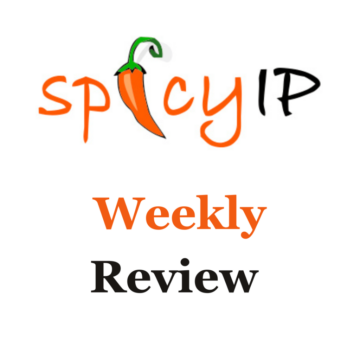On February 1, 2023 the Zero Draft of the WHO’s proposed Pandemic Prevention, Preparedness and Response Accord was published by the Intergovernmental Negotiating Body. Bringing us up to date with the key aspects of the accord and the current stage of negotiations, we are pleased to bring to you a guest post by SpicyIP intern Arnav Laroria. Arnav is a second-year law student at West Bengal National University of Juridical Sciences, Kolkata. He is interested in understanding and advocating for the complexities of intellectual property law, with a focus on the intersection of innovation, legal frameworks, and creative expression within the modern landscape.

IP Rights, Access, and WHO’s Pandemic Accord
Arnav Laroria
One significant international effort aimed at promoting global agreement to enhance reaction and readiness in the face of pandemic threats is the Pandemic Preparedness Accord. Members of the World Health Organisation (WHO) have suggested an instrument (“convention, agreement or other international agreement”) that seeks to provide a framework for state-to-state cooperation and the advancement of a comprehensive plan in order to strengthen global readiness, allowing countries to be more resilient against future pandemics that incorporates all governmental branches and the general public in light of the recent COVID pandemic.
The failures during the COVID pandemic were multifaceted, involving inadequate global coordination, underfunded health systems, and challenges in implementing measures effectively. Moreover, the failures of the WTO to serve as a unifying body for a response to the COVID pandemic have been well documented on the blog recently (for eg here). The International Health Regulations (IHR) were not fully utilised due to countries’ reluctance to comply, fear of economic repercussions, and the lack of enforcement mechanisms. Issues such as delayed information sharing, political tensions impacting collaboration, and prioritising national interests over global cooperation contributed to the failure to effectively implement the IHR, hampering a unified response. Therefore, the need for the Pandemic Accord arose due to the lack of comprehensive global response frameworks, urging a collective commitment to prevent, prepare for, and respond to future health crises, thereby filling the gaps in international cooperation and preparedness.
The agreement’s main objectives are to improve national, regional, and global capacities, ensure that healthcare is accessible to everyone, and promote readiness for future pandemics. The process includes diplomatic talks between different countries with the goal of creating a major international agreement that ensures improved collaboration and preparedness in the event of any pandemics in the future.
Negotiations and the Current Stage of the Process
It is still unclear if the 194 WHO member nations will be able to reach a consensus on a pandemic accord that would have any real influence, given the difficult and sensitive subjects being discussed. Due to the ongoing slow progress in the negotiations between member countries, uncertainties have been raised regarding the conclusion of the negotiations by the 77th World Health Assembly in May 2024.
The negotiations and foundation for the pandemic accord involved countries within the World Health Organisation (WHO). Nations like Argentina, Bangladesh, Brazil, China, India, Indonesia, Iran, Pakistan, Namibia, and South Africa advocated for specific language such as “Common But Differentiated Responsibility” (CBDR), aiming to address the varying needs and responsibilities of different nations. Additionally, countries like Fiji played a role in these discussions, emphasizing different perspectives on the accord. Up until now, the six nations chosen to spearhead the process—South Africa, the Netherlands, Japan, Brazil, Thailand, and Egypt (one from each region)—have used three separate draft documents from the Intergovernmental Negotiating Body Bureau (INB Bureau) as the foundation for the negotiations.
On February 1, 2023, the zero draft of the accord was published by the Intergovernmental Negotiating Body, and negotiations began on March 3, 2023. Countries set out the way forward for continued negotiations on the global accord with meetings in June, September, and October 2023. The negotiation text proposal provided by the Bureau on October 16 will be discussed during the 7th meeting of the INB, which takes place on November 6–10 and December 4–6. It seems that the members want a review of the text prior to even acknowledging it as a text for negotiation in order to maintain their stance that the proposal for negotiation text would be without prejudice to the right of any member state to present textual proposals and to the status of the compilation document.
Latest Proposal and Major Bones of Contention
Evidence of the urgent need to alter the global health security framework is the main area of attention. However, there are still significant differences on crucial issues. Benefit sharing and pathogens are two of them. When disease outbreaks occur, researchers may quickly find microorganisms, which enables the creation of medical countermeasures such as vaccinations as soon as feasible. The main issues regarding equity in pandemic accords revolve around the unequal distribution of resources, access to healthcare, and fair treatment during health emergencies like the COVID pandemic. Concerns have been raised about weakening equity clauses in the latest drafts of pandemic accords, possibly diminishing the focus on ensuring fairness and equal access to healthcare during global health emergencies.
Some of the primary elements of the previous draft of the pandemic accord are still included in the most current proposal, including time-bound waivers of intellectual property (IP) rights and advantages for nations that exchange information on hazardous microorganisms. However, during discussions, these two topics have been the main points of disagreement. In order to manufacture pandemic-related goods “during a pandemic,” the draft asks the nations and regional organisations that will be bound by the agreement to commit to agree upon, within the framework of relevant institutions, time-bound waivers of intellectual property rights. Additionally, it encourages patent holders to temporarily waive or manage, as appropriate, payment royalties made by developing country manufacturers. According to the wording, people who have benefited from public financing for the creation of items connected to pandemics would need to comply “as appropriate.”
Nevertheless, the pharmaceutical sector is adamantly against an IP waiver, claiming that by discouraging innovation, it would impede future pandemic responses. They have long maintained that the COVID-19 vaccination disparity was caused by trade and export restrictions. Furthermore, major Western countries have adopted a stance on the IP waiver that is somewhat comparable to this. A pandemic agreement with “major limitations” on intellectual property (IP) rights protection, according to German Health Minister Karl Lauterbach, “will not fly” for Germany and the majority of its fellow European Union (EU) members, who also asserted that intellectual property security is necessary in order to invest in vaccines, therapeutics, diagnostics, and other related fields. Several of the biggest pharmaceutical corporations in the world are based in both Europe and the US, and they oppose significant changes to intellectual property rights under a pandemic accord. Another issue, mostly brought up by European countries, is the relinquishing of executive power to the accord. They argue that it needs to be made very clear that, in the event of a pandemic, all of the signatory nations’ full executive power will not be restricted or infringed upon and that the executive power will always remain within the nations where the action occurs.
The Way Ahead
The WHO Member States are leading an international effort to improve global preparation and equality in responding to pandemics, known as the pandemic preparedness pact. This work is motivated by the lessons learned during the COVID-19 pandemic. With an eye towards a comprehensive and inclusive strategy for pandemic preparation and response, the INB was an important contributor in the writing and negotiation of this important agreement. Recent progress has shown that, despite the numerous informal and formal discussions surrounding the pandemic accord, agreement on issues such as the two main points of contention—time-bound waivers of intellectual property (IP) rights and equitable distribution—as well as advantages for nations that exchange information about potentially dangerous pathogens, is still (likely) a long way off.
Notable Recommendations
There are huge gaps between high- and low-income nations. High-income countries are reluctant to sign binding obligations to share lifesaving resources. But low-income countries demand that they have a right to fair and affordable access to vaccines and drugs. It is clear that rapid reporting, sharing pathogen samples and genomic sequence data, and sharing scientific and epidemiologic information are vital for global health. It is equally clear that a system where all the benefits go to high-income countries and lower-income countries are left behind cannot be tolerated. The below-stated suggestions are oriented towards addressing equity concerns and ensuring no one is left behind in the way the world deals with major health threats in the future. The recommendations focus on ensuring fair vaccine distribution, healthcare access, and resources, targeting underserved populations. These recommendations have been identified and compiled from various sources. These are as follows:
- The parties should commit to including obligations in public R&D funding agreements to ensure equitable access to the results of the funding. Equitable access obligations should apply regardless of the level of public funding, although parties should be permitted sufficient flexibility to negotiate detailed terms according to the context of a specific agreement. The parties should also recognise that equitable access obligations do not need to prevent for-profit entities from making commercial returns when appropriate and, therefore should not be viewed as a disincentive to accepting public funding. [GHIAA’s Comments on the Negotiating Text of the Pandemic Agreement]
- Article 11 should include a statement on the linkages between sustainable and distributed manufacturing, licencing and technology transfer, and equitable access to pandemic-related products so that there is clarity on the intended outcomes of technology transfer activities and what is needed to ensure that they are successful. [GHIAA’s Comments on the Negotiating Text of the Pandemic Agreement]
- The Pandemic Agreement should include commitments by the parties to require the recipients of public R&D funding to enter into licencing and technology transfer agreements for the purpose of facilitating equitable access to products developed with public funding. To ensure that governments are able to enforce these requirements, they must be included in the equitable access obligations set out in an R&D funding agreement. [GHIAA’s Comments on the Negotiating Text of the Pandemic Agreement]
- Transparency over agreement terms provides a mechanism for monitoring and holding the parties accountable for compliance with their obligations. With this in mind, the Pandemic Agreement should include aligned requirements for the parties to publish the terms of publicly funded R&D agreements and publicly funded purchase agreements—both bilateral and multilateral. [GHIAA’s Comments on the Negotiating Text of the Pandemic Agreement]
- Essentially, sharing technology, knowledge, and intellectual property by manufacturers accessing pathogens and data should be mandatory to ensure equitable access to all medical countermeasures during a pandemic. The COVID-19 pandemic demonstrated that contingent funding needs to be in place at the outset and available throughout the response to ensure that a global response is possible as soon as the crisis strikes. Financing for surge capacity to pivot and readily invest in new solutions as needed is essential to avoid catastrophic failures in a future pandemic. [Vaccines Work, GAVI: The Vaccine Alliance]
- A future pandemic may well require the urgent manufacture of a complex pharmaceutical product on a very large scale, one beyond the capability of the intellectual property owner alone. Third parties would accordingly require access to both patents and associated trade secrets. However, COVID-19 demonstrated that, even during a global emergency, some intellectual property owners were unwilling or unable to do so. Given this, having an alternative mechanism is vital. Thus, a new measure requiring countries to compel intellectual property owners to share trade secrets when determined necessary in a pandemic emergency should be introduced to enable the manufacturing of comparatively simple pharmaceutical products, thus extending its scope. Such a measure would be in the interest of high-income countries just as much as low- and middle-income ones. [Ellen ‘t Hoen, Financial Times]
- There is a dire need for strong enforcement mechanisms to ensure compliance with the contents of the accord. The latest draft remains “wholly inadequate” in ensuring compliance and accountability, as the draft merely states that parties may establish an implementation and compliance committee in the future. It also lacks text on how to encourage compliance with incentives, essentially meaning that there is no compliance mechanism in the accord, leaving the same for the future. The draft also lacks accountability for building and maintaining resilient health systems. The text only mentions that countries conduct self-assessments of their capacities every five years, with technical support from WHO “on request.” Self-assessments are notoriously unreliable, as the COVID-19 pandemic showed. These are some of the common recommendations given by many experts and organisations.
- SEO Powered Content & PR Distribution. Get Amplified Today.
- PlatoData.Network Vertical Generative Ai. Empower Yourself. Access Here.
- PlatoAiStream. Web3 Intelligence. Knowledge Amplified. Access Here.
- PlatoESG. Carbon, CleanTech, Energy, Environment, Solar, Waste Management. Access Here.
- PlatoHealth. Biotech and Clinical Trials Intelligence. Access Here.
- Source: https://spicyip.com/2023/11/ip-rights-access-and-whos-pandemic-accord.html
- :has
- :is
- :not
- :where
- $UP
- 1
- 11
- 16
- 2023
- 2024
- 320
- a
- Able
- About
- accepting
- access
- accessible
- accessing
- accord
- According
- accordingly
- accountability
- accountable
- Action
- activities
- Additionally
- address
- addressing
- adopted
- advancement
- advantages
- advocating
- affordable
- africa
- against
- Agreement
- agreements
- aimed
- Aiming
- aligned
- All
- Alliance
- Allowing
- alone
- also
- alternative
- Although
- always
- an
- and
- Another
- any
- Apply
- appropriate
- ARE
- AREA
- Argentina
- argue
- around
- AS
- aspects
- Assembly
- associated
- At
- attention
- available
- avoid
- Bangladesh
- based
- BE
- been
- began
- behind
- being
- benefit
- benefits
- between
- Beyond
- binding
- Blog
- body
- both
- bound
- branches
- Brazil
- bring
- Bringing
- brought
- Building
- Bureau
- but
- by
- cannot
- capability
- capacities
- Capacity
- catastrophic
- caused
- challenges
- Changes
- China
- chosen
- claiming
- clear
- collaboration
- Collective
- comments
- commercial
- commit
- commitment
- commitments
- committee
- Common
- comparable
- comparatively
- complex
- complexities
- compliance
- comply
- comprehensive
- Concerns
- conclusion
- Conduct
- connected
- Consensus
- contents
- context
- continued
- contributed
- contributor
- cooperation
- coordination
- countries
- country
- Covid
- COVID-19
- COVID-19 pandemic
- Creating
- creation
- Creative
- crises
- crisis
- crucial
- Current
- Dangerous
- data
- Date
- Deals
- December
- Delayed
- Demand
- demonstrated
- Despite
- detailed
- determined
- developed
- developing
- Diagnostics
- differences
- different
- differentiated
- difficult
- diminishing
- diplomatic
- dire
- discussed
- discussions
- Disease
- distributed
- distribution
- do
- document
- documented
- documents
- draft
- Drugs
- due
- during
- each
- Economic
- effectively
- effort
- Egypt
- elements
- emergency
- emphasizing
- enable
- enables
- encourage
- encourages
- enforce
- enforcement
- enhance
- ensure
- ensures
- ensuring
- Enter
- entities
- equal
- equality
- equally
- equitable
- equity
- essential
- essentially
- establish
- Ether (ETH)
- EU
- Europa
- Europe
- European
- European Countries
- european union
- European Union (EU)
- Even
- Event
- Every
- everyone
- exchange
- executive
- experts
- export
- expression
- extending
- eye
- Face
- facilitating
- Failure
- fair
- fairness
- fear
- feasible
- February
- fellow
- Fields
- financial
- Financial Times
- financing
- Find
- five
- Flexibility
- Focus
- follows
- For
- formal
- Forward
- Foundation
- Framework
- frameworks
- from
- FT
- full
- fully
- funded
- funding
- Furthermore
- future
- gaps
- General
- general public
- German
- Germany
- given
- Global
- Global health
- global response
- Go
- goal
- goods
- governmental
- Governments
- Guest
- Guest Post
- Have
- having
- he
- Health
- health systems
- healthcare
- holders
- holding
- How
- How To
- However
- HTML
- HTTPS
- huge
- identified
- if
- IMF
- impacting
- implement
- implementation
- implementing
- important
- improve
- improved
- in
- Incentives
- include
- included
- includes
- Including
- Inclusive
- incorporates
- india
- Indonesia
- influence
- informal
- information
- Innovation
- institutions
- instrument
- intellectual
- intellectual property
- intended
- interest
- interested
- interests
- International
- intersection
- into
- introduced
- Invest
- involved
- involving
- IP
- Iran
- issue
- issues
- IT
- items
- ITS
- Japan
- just
- karl
- Key
- knowledge
- known
- Kolkata
- Lack
- landscape
- language
- large
- latest
- Law
- leading
- learned
- leaving
- left
- Legal
- Lessons
- Lessons Learned
- Level
- light
- like
- likely
- Long
- made
- Main
- maintain
- maintaining
- major
- Majority
- Making
- manage
- mandatory
- Manufacturers
- manufacturing
- many
- max-width
- May 2024
- May..
- meaning
- measure
- measures
- mechanism
- mechanisms
- medical
- meeting
- meetings
- member
- Members
- mentions
- merely
- mind
- minister
- Modern
- monitoring
- more
- Moreover
- most
- mostly
- motivated
- much
- multifaceted
- multilateral
- must
- National
- Nations
- necessary
- Need
- needed
- needs
- negotiation
- negotiations
- Netherlands
- New
- new solutions
- no
- November
- now
- numerous
- obligations
- occur
- october
- OECD
- of
- off
- on
- ONE
- ones
- only
- oppose
- or
- order
- organisation
- Organisations
- Other
- out
- over
- owner
- owners
- Pakistan
- pandemic
- pandemic prevention
- Pandemics
- parties
- patent
- Patents
- payment
- People
- perspectives
- Pharmaceutical
- Pivot
- Place
- plan
- plato
- Plato Data Intelligence
- PlatoData
- played
- pleased
- points
- political
- populations
- possible
- possibly
- Post
- potentially
- power
- preparation
- Prepare
- present
- prevent
- Prevention
- previous
- primary
- Prior
- process
- Product
- Products
- Progress
- promote
- promoting
- property
- Property Rights
- proposal
- Proposals
- proposed
- protection
- provide
- provided
- provides
- public
- publicly
- publish
- published
- purchase
- purpose
- quickly
- R&D
- raised
- rapid
- reach
- reaction
- readily
- Readiness
- real
- recent
- recently
- recipients
- recognise
- recommendations
- regarding
- Regardless
- region
- regional
- regulations
- related
- relevant
- reluctance
- remain
- remains
- repercussions
- Reporting
- request
- require
- Requirements
- researchers
- resilient
- Resources
- Respond
- responding
- response
- responses
- responsibilities
- restricted
- restrictions
- Results
- returns
- review
- right
- rights
- Role
- royalties
- same
- Scale
- SCIENCES
- scientific
- scope
- secrets
- sector
- security
- Seeks
- seems
- sensitive
- separate
- Sequence
- serve
- set
- several
- Share
- sharing
- should
- showed
- shown
- sign
- signatory
- significant
- Simple
- SIX
- slow
- So
- Solutions
- some
- somewhat
- Soon
- Sources
- South
- South Africa
- specific
- Stage
- stance
- State
- Statement
- States
- Status
- Still
- Strategy
- Strengthen
- Strikes
- strong
- Student
- successful
- such
- sufficient
- support
- surge
- Surrounding
- system
- Systems
- takes
- Talks
- targeting
- Technical
- technical support
- Technology
- tensions
- terms
- text
- textual
- Thailand
- that
- The
- The Future
- the Netherlands
- the world
- their
- Them
- therapeutics
- There.
- thereby
- therefore
- These
- they
- Third
- third parties
- this
- threats
- three
- throughout
- Thus
- times
- to
- tolerated
- Topics
- towards
- trade
- transfer
- treatment
- two
- unable
- uncertainties
- unclear
- under
- underserved
- understanding
- union
- university
- until
- upon
- urgent
- urging
- us
- used
- Vaccine
- vaccines
- various
- varying
- very
- viewed
- vital
- want
- was
- Way..
- we
- WELL
- were
- West
- Western
- What
- What is
- when
- which
- WHO
- will
- with
- within
- without
- wording
- Work
- world
- would
- writing
- years
- you
- zephyrnet
- zero












